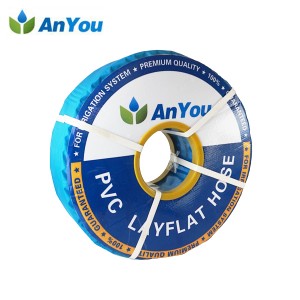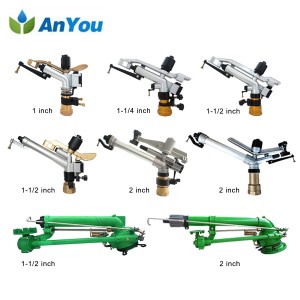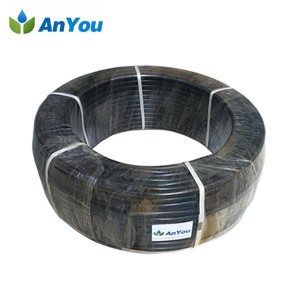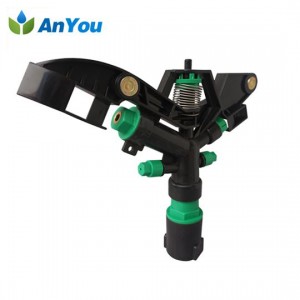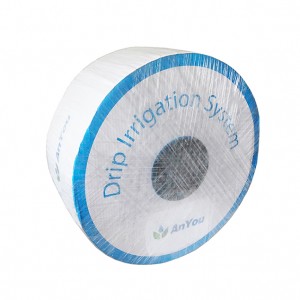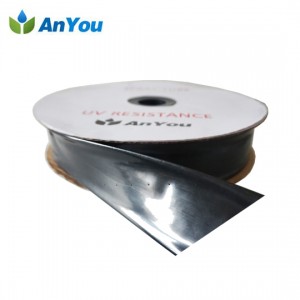Agriculture is one of the important components of my country’s industrial structure. The country has always maintained a high degree of attention to agricultural development. In the context of modernization, the country is also very concerned about the modernization of agriculture. While promoting the high-quality development of agriculture, it also promotes high standards. Construction of farmland.
1. Influencing factors of efficient water-saving irrigation technology for high-standard farmland construction
1.1 Hard environment factors
The hard environmental factors mentioned here are essentially environmental factors within a fixed time and space range, specifically, including factors such as natural environment, man-made, and economic factors. The first natural environmental factor is well understood. It is the natural factors such as climate, water resources, topography and landforms faced by local agricultural development and irrigation. Human factors mainly refer to the impact of the specific characteristics of farmers on the specific use of irrigation technology. Economic factors specifically refer to the household income of farmers, the number of laborers, and so on.
1.2 soft environment factors
Most of the soft environment factors are concentrated on the levels of technology, organization, society, and policy. The technical factors mainly refer to the quality and adaptability of the technology, as well as the infrastructure supporting water conservancy and irrigation projects. The organizational factors include the influence of management and intensive organization. The social factors that affect the application of efficient water-saving irrigation technology are the information channels and related conditions of social services. The policy factors are also easy to understand, that is, the relevant management system, government Departmental funding and policy support.
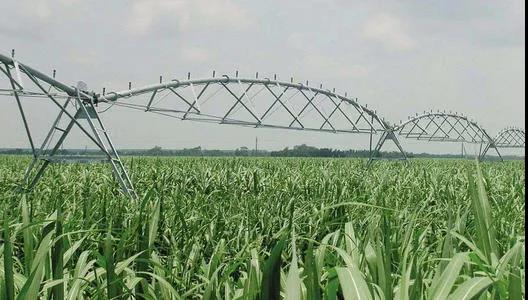
2. Specific classification of efficient water-saving irrigation technologies for high-standard farmland construction
2.1. Sprinkler irrigation technology
The essence of sprinkler irrigation technology is to use a uniform flat spray method to achieve the goal of effectively irrigating large areas of crops, and without manpower, the crop can be irrigated with the help of mechanical facilities. Because the water delivery method of sprinkler irrigation technology is pipeline transportation, it significantly reduces the loss in the process of irrigation water transportation, and the specific intensity and quantity of irrigation can also be effectively controlled, and there will be no deep layer under the premise of uniform irrigation. The problem of water leakage can save 30% to 50% of water consumption compared with surface irrigation. In addition, sprinkler irrigation can be applied to most of the soil and crop irrigation. The actual requirements for the terrain are not high, and the sprinkler irrigation method is still effective on farmland with a slope of 5 degrees.
However, when the wind is strong, it will cause a lot of water droplets to be blown away, and it will also affect the range of sprinkler irrigation, causing uneven irrigation. Generally speaking, it is necessary to stop sprinkler irrigation when the wind exceeds level 4. . In addition, sprinkler irrigation itself sprays water into the air, which has a larger evaporation capacity than ground irrigation. For this reason, sprinkler irrigation is best carried out at night and under low wind conditions. At the same time, the use of sprinkler irrigation facilities The amount of one-time investment is relatively large, and the energy consumption is relatively high.
2.2. Drip irrigation technology
Drip irrigation technology is to transport irrigation water to the farmland by means of pipes, and then transport the water directly to the roots of plants from the small holes set in the pipes. This high-efficiency water-saving irrigation technology can save one-third to one-half of the amount of surface irrigation, and can save 15% to 25% of water compared to sprinkler irrigation. And the drip irrigation system can control the water output of any infusion device very accurately, so that the uniformity of irrigation is basically maintained at 85% to 90%. At the same time, because this irrigation technology operates under low pressure, the energy consumption is relatively low, and it can also be applied to irrigation of almost all types of land and crops. However, the dripper and capillary used in this technology are relatively small, which is prone to blockage due to the sediment and other substances in the water source.
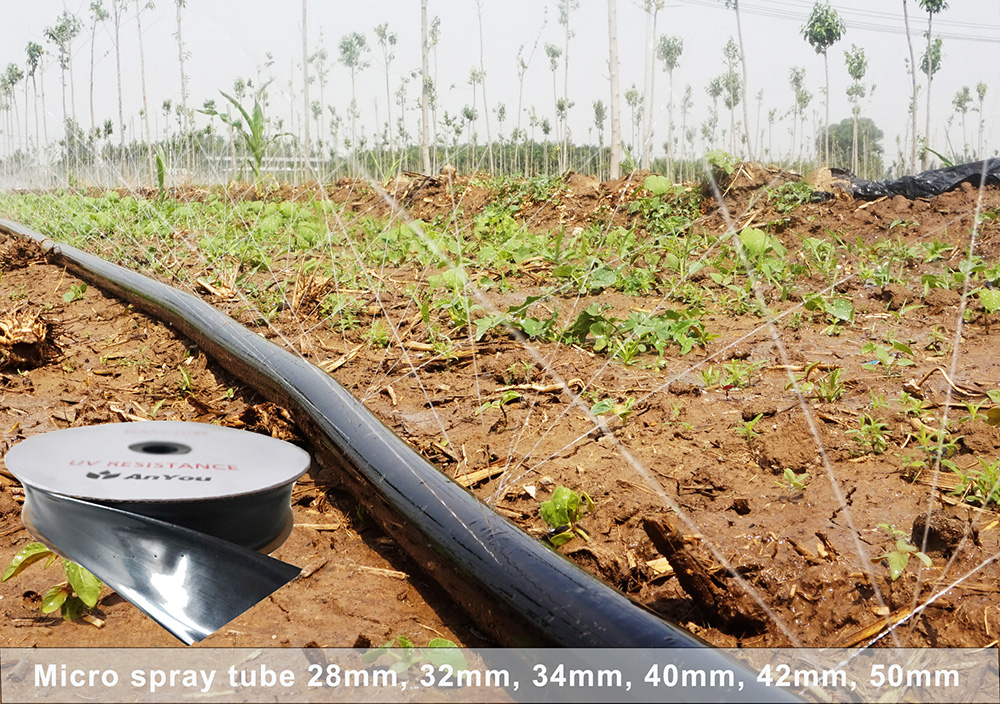
2.3. Water lifting and irrigation water technology
This technology is suitable for mountainous areas with a large number of rivers and a large drop in complex terrain. In areas where the ground is high and the water bottom cannot be used for artesian irrigation with river drop, the water-lifting irrigation technology can be well developed, and it can be classified in essence. In the drip irrigation technology system. The entire irrigation system under this technology mainly includes the water intake, the water inlet, the water inlet pipe, the water pump, the upper water pipe, and the high-level water pond. The water intake is connected to the river, and then into the pool, and the corresponding water inlet pipe is installed at the bottom of the water inlet pipe. The bottom of the water inlet pipe needs to be connected with the water pump. The inlet and outlet of the pump itself are connected with the upper water pipe, and then the upper water pipe and the high-level pool are connected. After the high-level pool is connected, a water distribution pipe is arranged to supply water to the field. The main water distribution pipe is combined with a Venturi fertilizer applicator with a ball valve. The fertilizer applicator needs to be connected to the branch pipe for water distribution, which has a large number of small holes. Install the rubber pad on it, and connect the rubber pad and the bypass to each other. The drip irrigation tape is connected to the bypass, and the drip irrigation tape can be set above or below the soil. When setting up this whole set of irrigation system, it is necessary to keep the height difference between the bottom of the inlet pool and the water inlet of the pump greater than 2 meters, and the height difference between the height of the high-level pool and the irrigation target farmland should be greater than or equal to 10 meters. Drip irrigation provides sufficient pressure. It is essentially a secondary development of ordinary drip irrigation technology. It also has some advantages and disadvantages of drip irrigation technology, but because of its further expansion in the irrigation system, its capital investment is relatively large.
2.4. Automated water-saving irrigation technology
The previous farmland irrigation method, no matter what method is used, requires artificial support, but this brings about the problems of uneven irrigation and unstable time, and because of the height of the area, the soil water storage is uneven. The problem directly affects the overall growth quality of crops. Under the influence of the continuous development of related technologies, automatic water-saving irrigation technology was invented. The irrigation system under this irrigation technology is mainly composed of water storage, water inlet and outlet pipes, and motors. The water reservoir is cylindrical, and water inlet and outlet pipes need to be installed on the left and outer walls of the bottom respectively. At the same time, a water pump is installed at the position of the water inlet pipe, and the water outlet pipe is fixed on the water reservoir by a bracket.
3. How to effectively promote efficient water-saving irrigation technology
3.1 Enhancement of fund guaranteez
In the process of building high-standard farmland, if you want to promote these water-saving irrigation technologies, local governments need to make corresponding optimizations in the structure of fiscal expenditures, based on the tasks, standards and cost changes of building high-standard farmland. A reasonable amount of fiscal funds should be invested in the promotion of water-saving irrigation systems and technologies, and local expenditure responsibilities need to be implemented in a timely manner in accordance with relevant regulations. The main fiscal responsibility is the provincial finance. If conditions permit, it can be encouraged In some areas with better financial situation, on the basis of the amount of national fixed standard funds invested, financial support should be appropriately increased in order to provide sufficient financial support for the promotion of high-efficiency water-saving irrigation technologies.
3.2. Strengthening of demonstration and leadership
In the process of building high-standard farmland to promote water-saving irrigation technology, it is necessary to carry out farmland demonstration construction work. Select some farmland in this area that has problems with agricultural irrigation, and analyze its climate, topography, hydrology and other conditions to find out On the basis of the main factors affecting agricultural irrigation, the construction of high-standard farmland for water-saving irrigation provides a demonstration for the further construction of high-standard farmland and the promotion of water-saving irrigation technology in the same area.
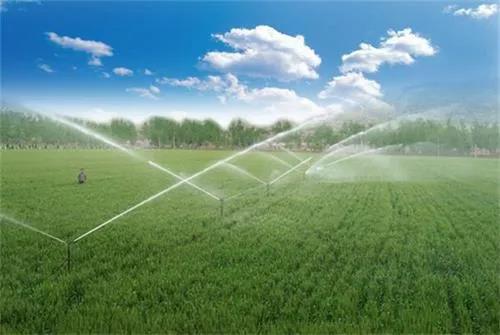
3.3 Establish and improve the water-saving management system
In the process of high-standard farmland construction, if you want to promote the use of water-saving irrigation systems in a true sense, you need to ensure the institutionalization and standardized development of its operation and management, and make differences and flexibility based on the actual differences in each region. management. In this process, local governments need to fully play their guiding role, actively participate in the operation and management of the water-saving irrigation system, and establish a farmland water-saving irrigation system management system that includes all parties involved.
The development of agricultural modernization is one of the key tasks of our country. Under the current background of constructing high-standard farmland, affected by the development of related technologies, the promotion of water-saving irrigation technology has become one of the key tasks. At the same time, the construction of demonstration and leading farmland will gradually promote water-saving irrigation technology.
Post time: 26-03-2021

